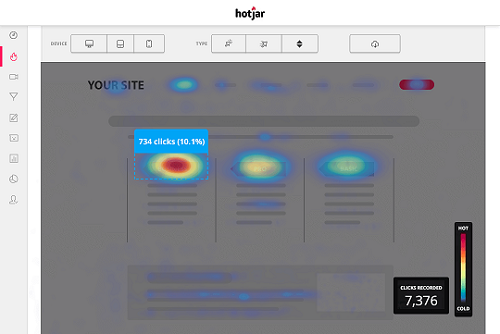Social Media as a Source of News
How often have you logged onto a social media website and
seen an item of news being shared on the homepage? Social media is increasingly
becoming a way for people to share news stories both as first-hand accounts and
to relay news articles they have found interesting to those in their social
network. A new study by Reuters Institute Digital Report found that 43 per cent
of Britons between the ages of 16 and 24 are much more likely to access news
through social networks rather than through search engines. The key findings of
the study were that “news is becoming more mobile, more social, and more
real-time” with digital patterns of news access becoming more entrenched
particularly amongst the younger half of the population. How can the use of
social media change the way that news stories are spread?
Image – www.tanialfreitas.wordpress.com
The Reuters study found that there is a significant
generational difference, with social media rated as being more important than
search engines amongst the ‘under 45s’. However, among the ‘over 45s’ in the
UK, only 9% think that social media is an important way of finding news. This
is an unsurprising trend, as younger people tend to spend a lot more time on
social media and, with a greater number of contacts in their network, the
information that they share will receive a greater following and be more likely
to develop a discussion.
Image - Reuters
One of the reasons why people enjoy posting about
interesting news stories on their own social media profiles is because many
people enjoy engaging in debate, and discussing the important impact of certain
items of news. A social media network therefore provides a ready-made group of
people with whom you can spark off comment about certain news stories. The
study by Reuters also found that commenting on a news story via a social
network was more common among the Spanish (27%), Italians (26%) and the
Americans (21%) who were twice as likely to comment on a news story via a
social network as the British (10%).
Social media can also be a very effective way of spreading
news information virally and in an instantaneous manner. Twitter is an
increasingly important social network for spreading this kind of information,
with users such as BBC Breaking News having over 7 million followers. However,
Twitter can also have a substantial impact for the general user who may be able
to report on breaking news reports if they were there at the time of it
happening. This has led to the advent of a form of ‘civilian journalism’ with
new forms of media taking over. A good example of this was the New York plane
crash in the Hudson River, where Twitter users were able to break the news of
the incident almost 15 minutes before the mainstream media was able to alert
viewers about the crash. The first tweet that went out was by Jim Hanrahan ,
who wrote: “I just watched a plane crash into the hudson rive[r] in manhattan”.
However, it wasn’t this tweet that went viral but a tweet from Janis Krums who
also posted an image of the passengers being rescued from the drowned plane
alongside the text, “There’s a plane in the Hudson. I’m on the ferry going to
pick up the people. Crazy”. This demonstrates the potential power of Twitter and
how it can be an important tool in spreading real-time commentary of
significant events. It shows how people are receptive to receiving news in this
manner and find first-hand accounts of breaking news more engaging.
This is however not a one off phenomenon - Twitter has also showed its increasing
worth as a way to report news in other instances, for example during and after
the earthquake and tsunami disaster in Japan in March 2011. In this example,
the phone networks could not handle the influx of calls and texts that followed
this natural disaster, however the internet connections continued to function.
This allowed Twitter to step in and soon after the earthquake hit Japan, 1,200
tweets a minute were coming out of Tokyo. Specific hashtags were created in order
to organise the massive flood of messages relating to the earthquake. This meant
information could be separated into general earthquake information, requests
for rescue and aid, evacuation information, medical information for victims and
confirmation of the safety of individuals. This shows how beneficial social
media can be in breaking news to a wide audience and how it can also help
people connect and share experiences and information from disasters such as
this.
However, the ability for civilians to act as journalists
through social media can also have negative impacts - 50% of news consumers
have received “breaking news” via social media, only to find out later that it
was incorrectly reported. This poses the question – how trustworthy is news
spread by social media? Furthermore, the harm that can come from social media
being used as a way to spread news should also be highlighted. For example, the
London riots in 2011 escalated rapidly, and this can be partly attributed to
the use of social media, such as Facebook, Twitter and Blackberry Messenger
which acted to unite forces and incite likeminded individuals into action.
David Cameron commented on the rioter’s use of social media following the riots
stating that, “free flow of information can be used for good. But it can also
be used for ill”. Although Twitter can be extremely useful in providing responsive,
uncensored and immediate updates on the news, the negative aspects should not
be forgotten as the power to spread information can also be used for harmful
means.
What do you think?
Do you use social media to check the news? Do you think
social media is a valuable way to spread breaking news?
Social Media as a Source of News
 Reviewed by Anonymous
on
Tuesday, September 24, 2013
Rating:
Reviewed by Anonymous
on
Tuesday, September 24, 2013
Rating:
 Reviewed by Anonymous
on
Tuesday, September 24, 2013
Rating:
Reviewed by Anonymous
on
Tuesday, September 24, 2013
Rating:



















 Entrepreneur, international speaker on Social Media Marketing. First one in the UK to write and speak in conferences about Twitter as a marketing tool. Consultant to Corporate Companies, Government Organizations, Marketing Managers and Business Owners.
Entrepreneur, international speaker on Social Media Marketing. First one in the UK to write and speak in conferences about Twitter as a marketing tool. Consultant to Corporate Companies, Government Organizations, Marketing Managers and Business Owners. Aspiring novelist with a passion for fantasy and crime thrillers. He hopes to one day drop that 'aspiring' prefix. He started as a writer and soon after he was made Executive Editor and Manager of the team at Social Songbird. A position he held for 5 years.
Aspiring novelist with a passion for fantasy and crime thrillers. He hopes to one day drop that 'aspiring' prefix. He started as a writer and soon after he was made Executive Editor and Manager of the team at Social Songbird. A position he held for 5 years. Musician, audio technician, professional tutor and a Cambridge university English student. Interested in writing, politics and obsessed with reading.
Musician, audio technician, professional tutor and a Cambridge university English student. Interested in writing, politics and obsessed with reading. Recently graduated with a BA in English Literature from the University of Exeter, and he is about to study an MA in Journalism at the University of Sheffield. He is an aspiring journalist and novelist; in his free time he enjoys playing chess, listening to music and taking long walks through nature.
Recently graduated with a BA in English Literature from the University of Exeter, and he is about to study an MA in Journalism at the University of Sheffield. He is an aspiring journalist and novelist; in his free time he enjoys playing chess, listening to music and taking long walks through nature. Lucy is an undergraduate BSc Politics and International Relations student at the London School of Economics and Political Science.
Lucy is an undergraduate BSc Politics and International Relations student at the London School of Economics and Political Science. Anna Coopey is a 4th year UG student in Classics at the University of St Andrews in Scotland. She is a keen writer and researcher on a number of topics, varying from Modern Greek literature to revolutionary theory.
Anna Coopey is a 4th year UG student in Classics at the University of St Andrews in Scotland. She is a keen writer and researcher on a number of topics, varying from Modern Greek literature to revolutionary theory.
